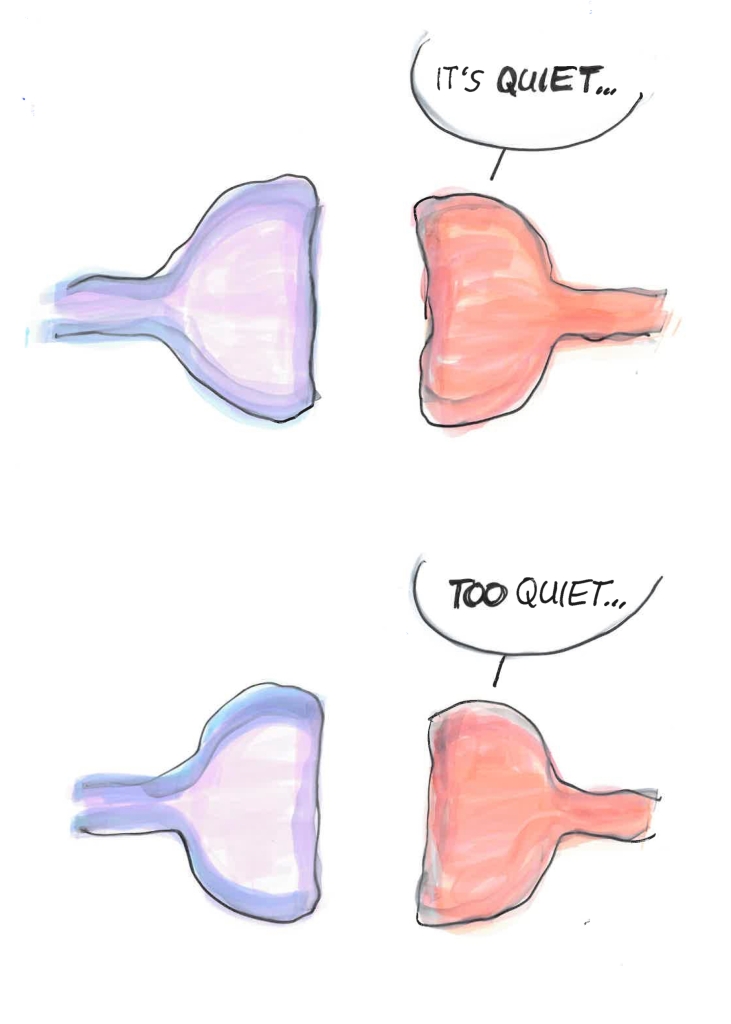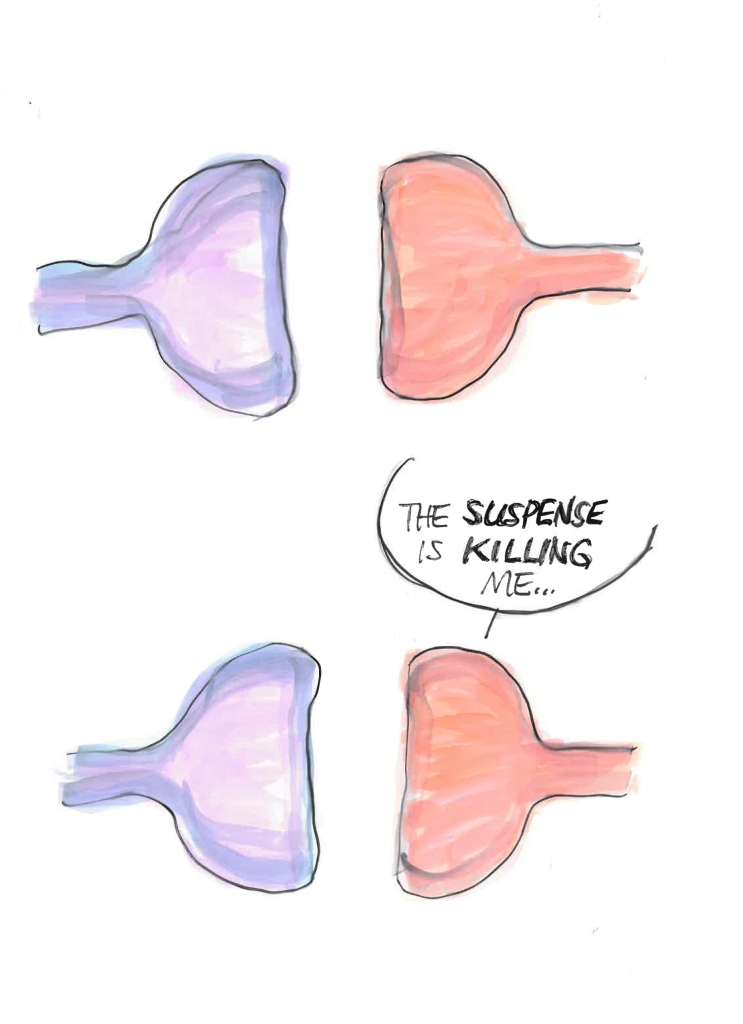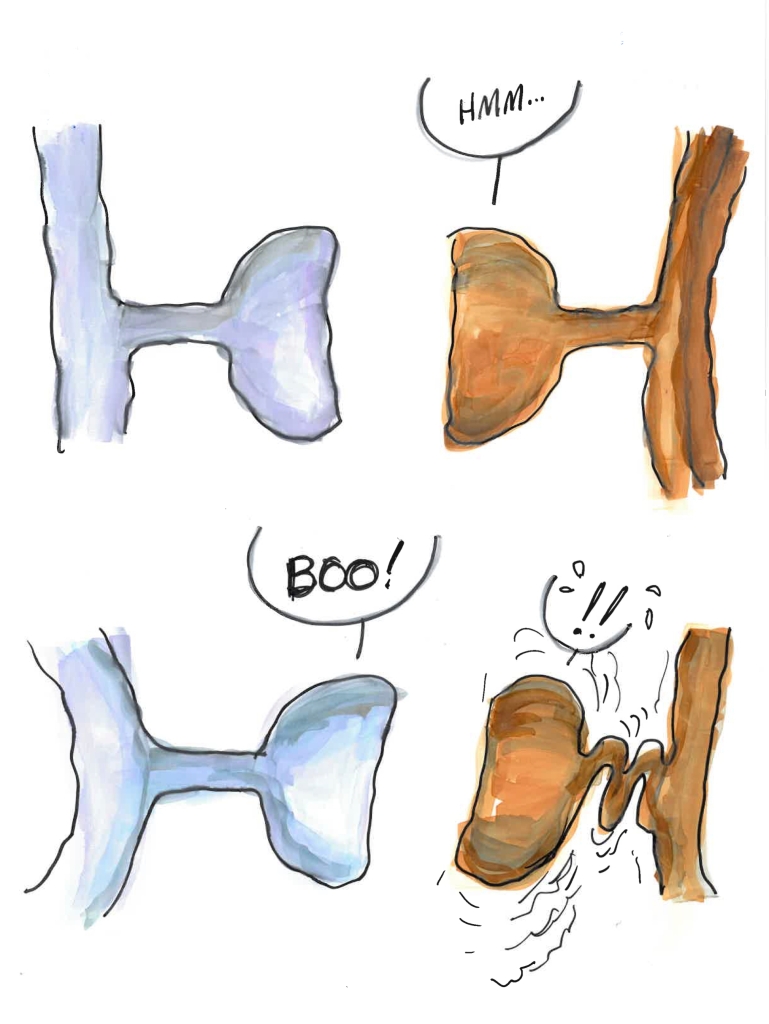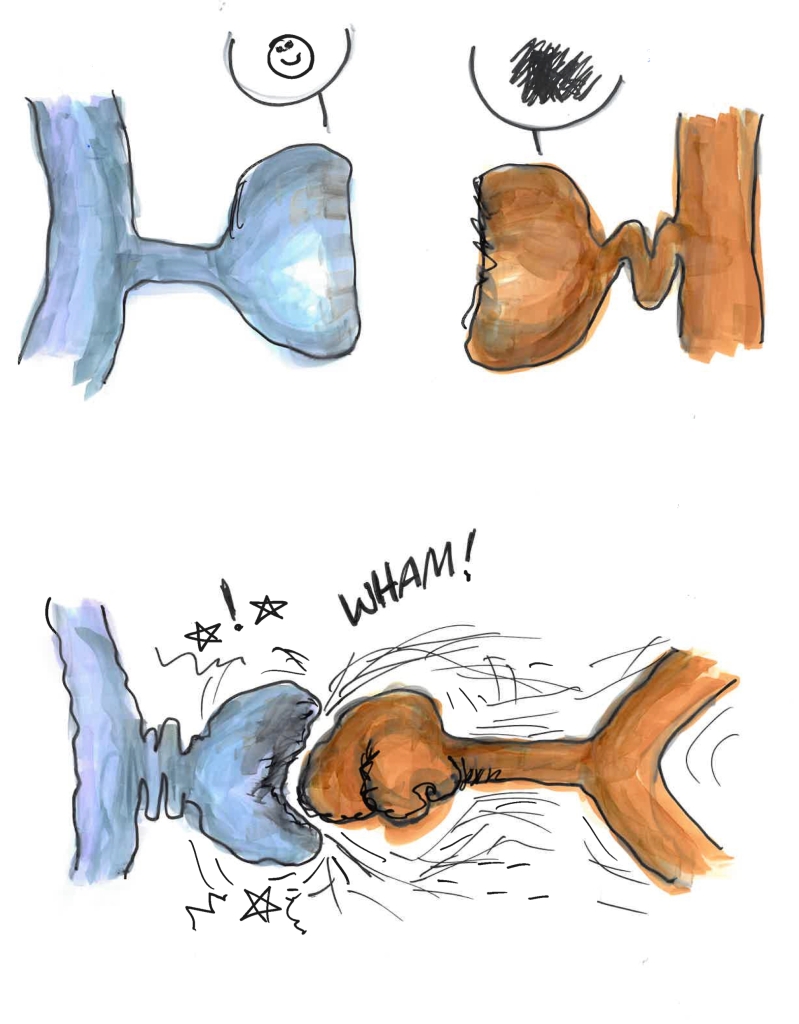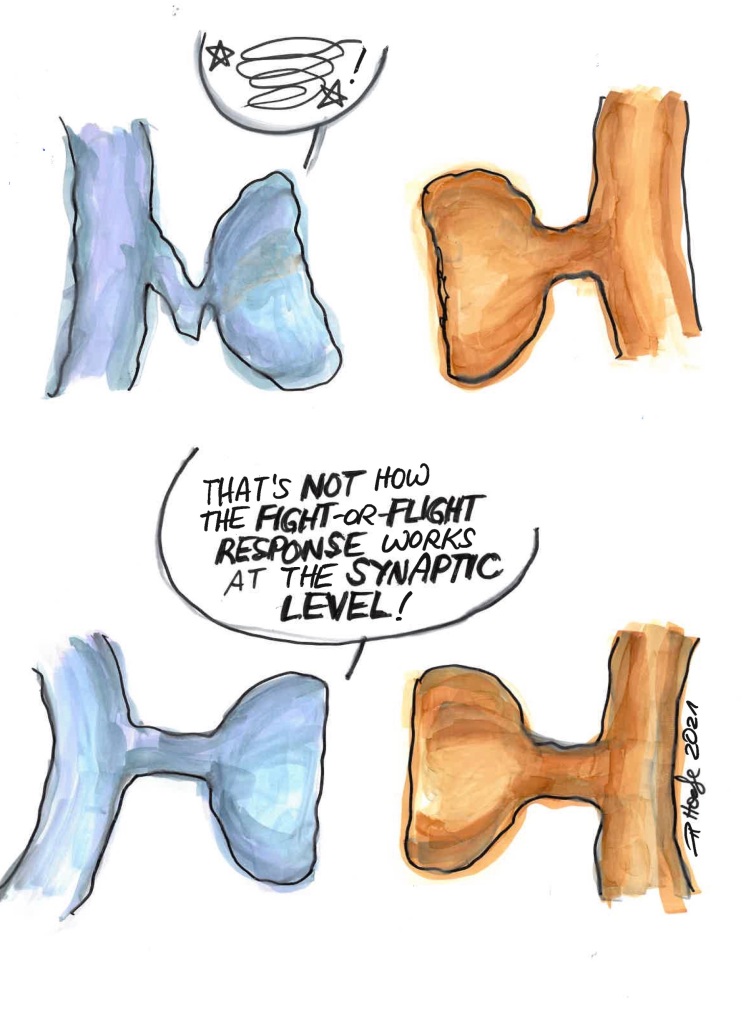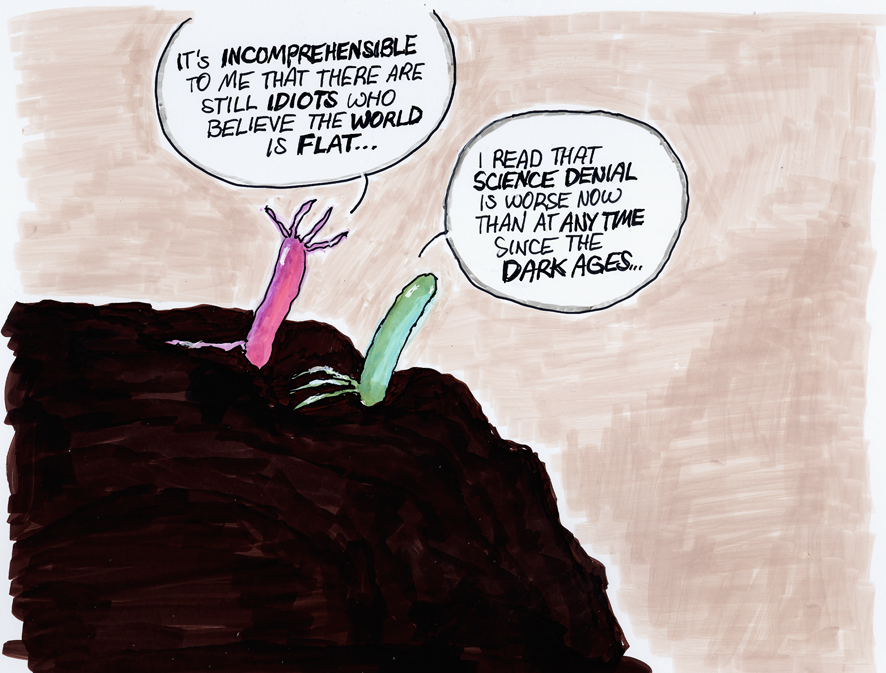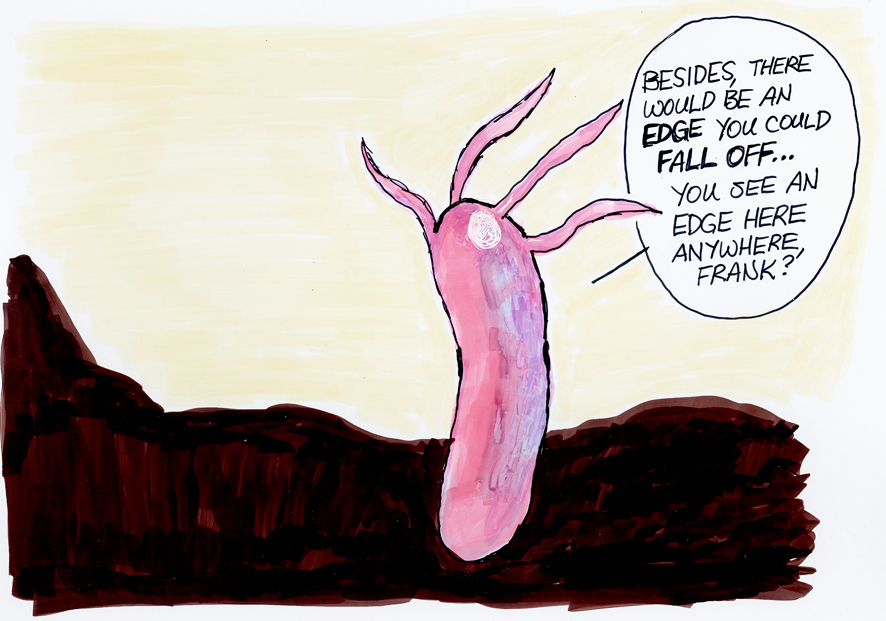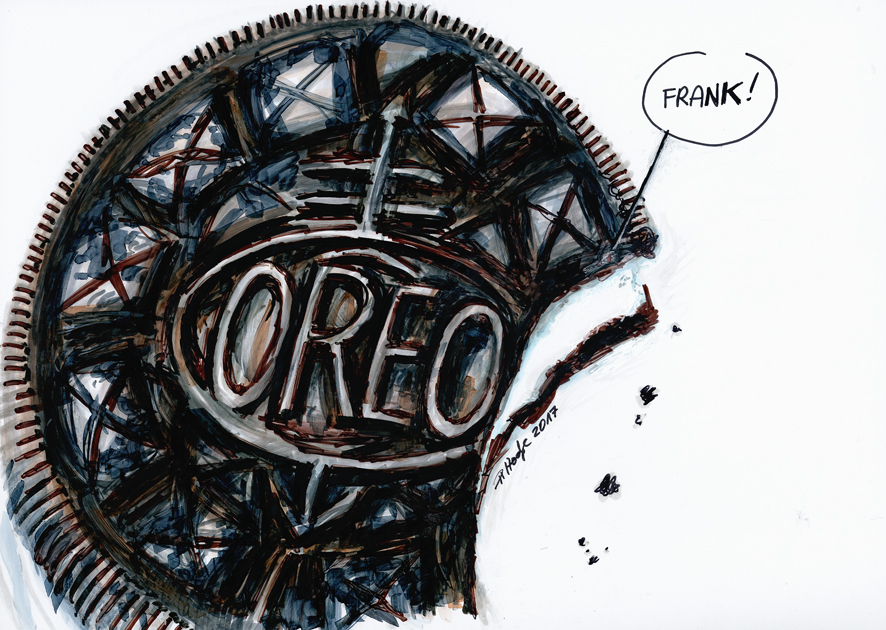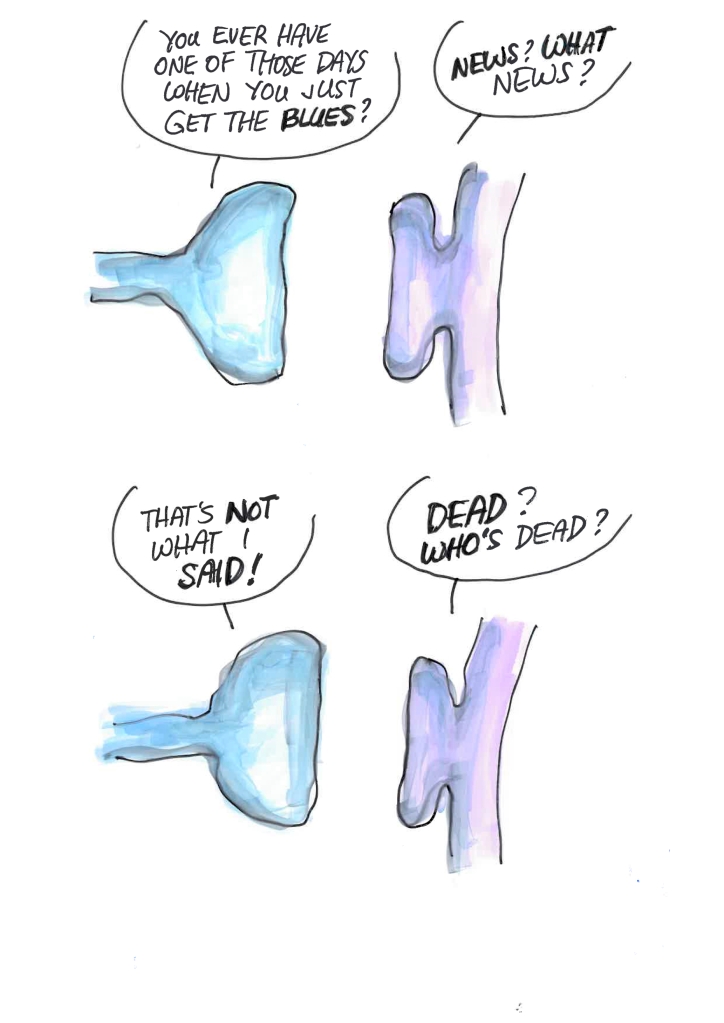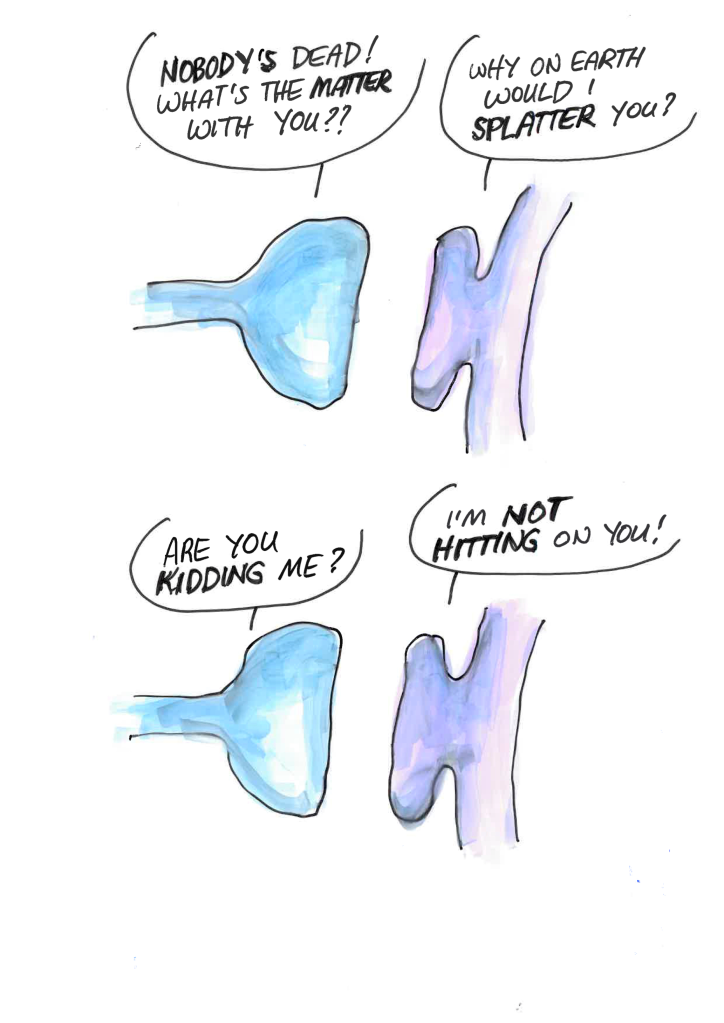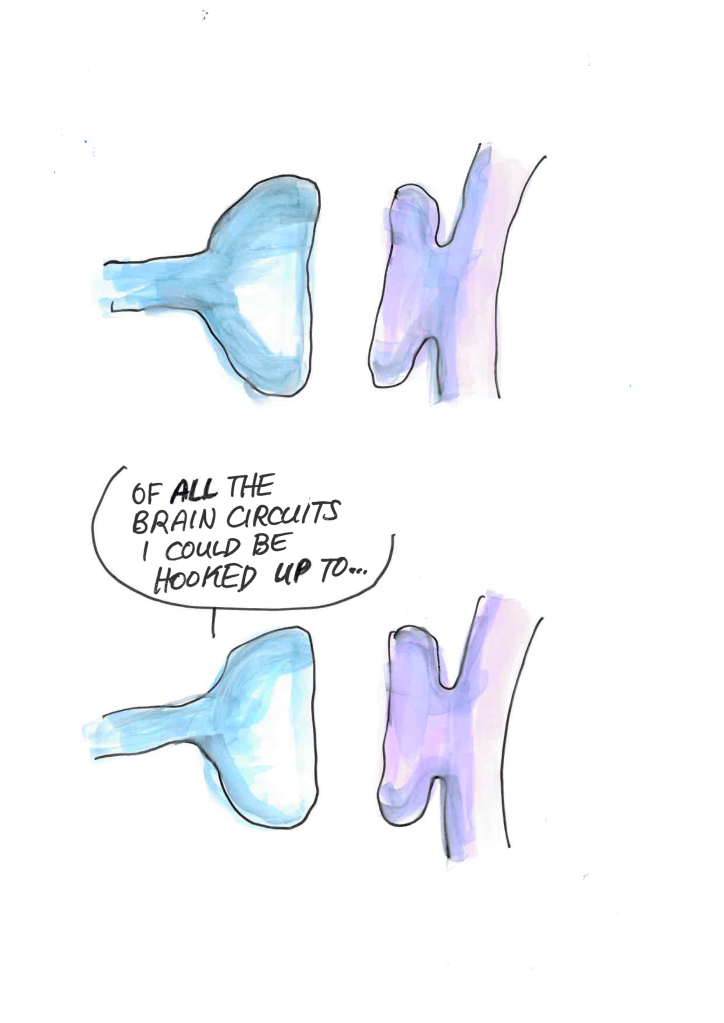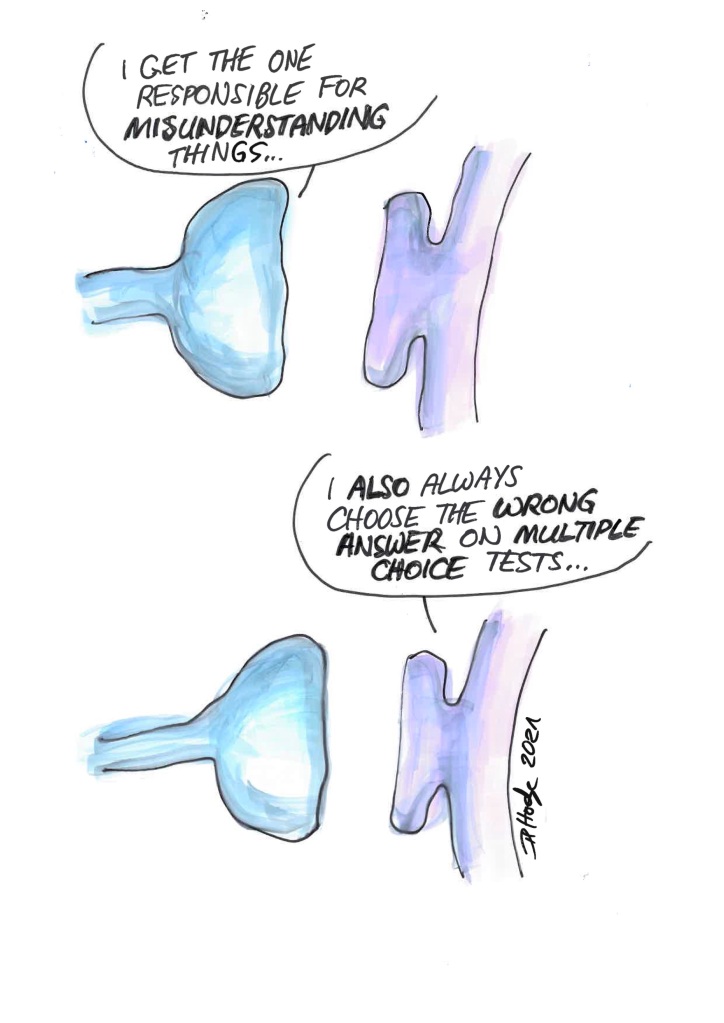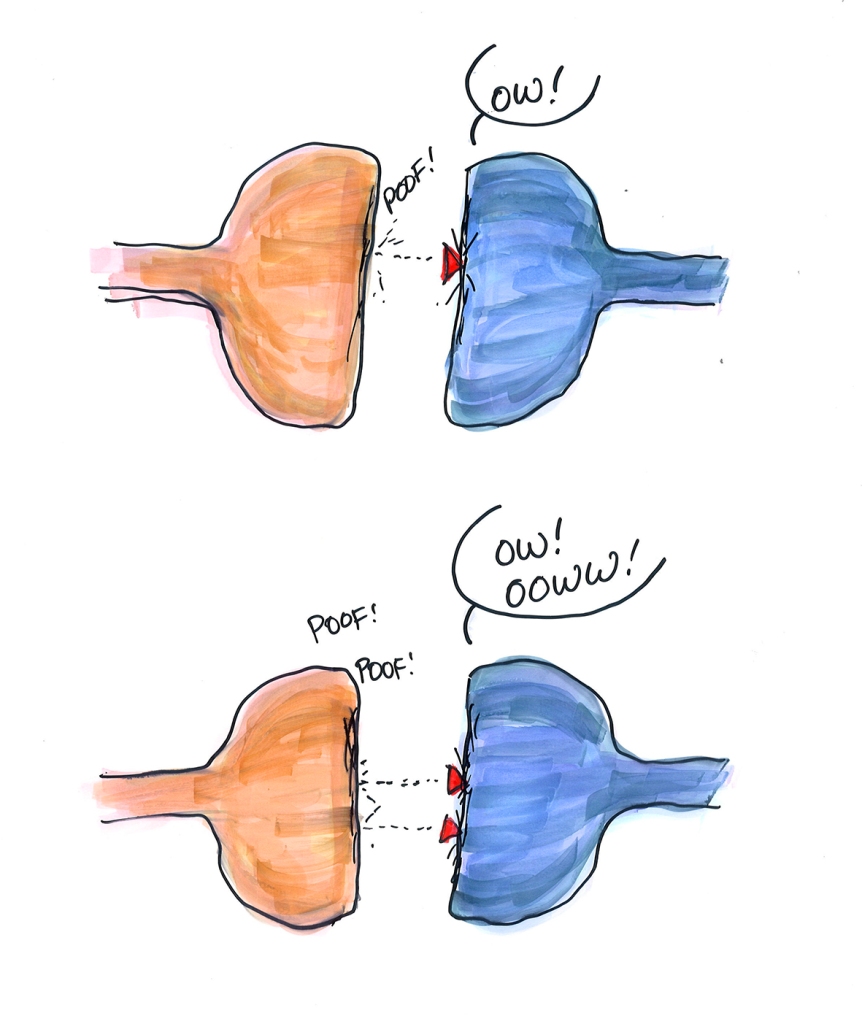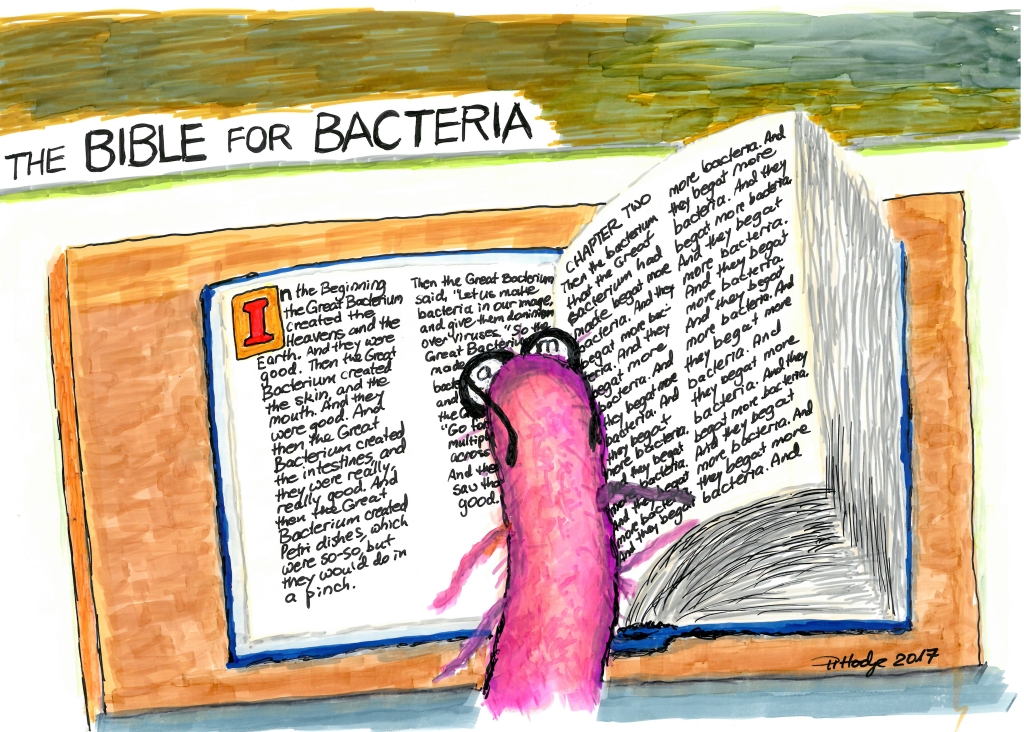Russ Hodge1*, Pablo Mier Munoz2, and Miguel Andrade2
- Max Delbrück Center for Molecular Medicine of the Helmholtz Association, 13125 Berlin, Germany
- Faculty of Biology and Center for Computational Sciences in Mainz (CSM), Johannes Gutenberg University Mainz, 55128 Mainz, Germany
* Corresponding author: Russ Hodge, hodge@mdc-berlin.de
Conflict of interests: This project has received no funding from the pizza industry or its competitors, and there are no other conflicts of interest.
INTRODUCTION
Pizza has long held a stigma in biological research that dates back to Linneaus, who was intimately familiar with its properties as an aphrodisiac but failed to recognize it as a living organism. As a result, species of pizza found no place within his elaborate system of classification, and have consequently been entirely omitted in the clade systems developed by evolutionary biologists. Add to this the nigh impossibility of maintaining pizza in laboratories, from which it tends to spontaneously disappear through mechanisms that are poorly understood, and the result is that pizza has been forgotten in the deep freeze as the life sciences have moved forward in great strides.
The physiology of pizza makes it difficult to classify; on the one hand its structure bears striking similarities to a single cell, vastly scaled up, if you think of the crust as a membrane, and from that perspective the ingredients resemble organelles. Yet it also has properties we normally associate with highly developed multicellular organisms. One could also consider it a sort of complex ecosphere containing many subspecies. Data from an evolutionary study should show us which of these models is most appropriate, but the data will have to be new. The fact that pizzas never evolved a skeletal or exoskeletal system has led to a paucity of fossil remains which otherwise would surely have generated interest among the paleobiology community and provided insights into the descent of modern species.
The synthesis of Darwin’s theory of evolution with findings from genetics has led to modern, computational approaches that compare the features of modern organisms to reconstruct those of their common ancestors. Here we apply this basic principle of “common descent” to construct the first evolutionary tree of pizza. We should note a potential confounding factor: Modern varieties have clearly been shaped by human domestication and selection, and a small number of mutant strains have spontaneously appeared in recent years, probably due to exposure to microwave radiation. While these factors confound the picture to some degree, the method does, in fact, permit a means of resolving questions about pizza biology that have long resisted analysis.
The resulting diagram introduces considerable clarity into the path by which current species of pizza arose from a single common ancestor, through stages that became the founders of major branches, and finally to modern forms. It permits us to hypothesize the existence of ancestral forms that have homologs in the varieties that exist today. Finally, it provides insights into fundamental biological processes that are unique to pizza, supporting a claim that these species represent a fourth domain of life which is distinct from archaea, bacteria, and eukarya, but which has clearly interacted with them in ways that have shaped its evolution.
We find evidence that pizza has managed to co-opt fundamental biological processes from the other domains of life and mix them in a way that hints at hitherto unexplored evolutionary mechanisms. Pizza appears to have snatched genes from various sources on its way to becoming an independent organism, then undergone a phase in which it became wholly dependent on human domestication, leading to a simplification of its biology. Our study suggests that the appearance of pizza in complex ecospheres containing other life forms influences them on several levels – from the neurological to the behavioral to the social, altering patterns of predation and other types of interspecies interactions.
METHODS AND RESULTS
We visited approximately 100 different Italian restaurants in a sample of no less than five European countries over a period of 4 years (extrapolated from social media statistics of the authors: FourSquareTM, GoogleTM Location History, etc.) to gather the names and ingredients present in a total of 58 different pizzas (Supp.File1). While we did not taste them all, we can attest that none are venomous and their organoleptic qualities can therefore be successfully transmitted mouth-to-mouth to the next generation of diners.
The ingredients were clustered in 9 groups according to their origin and use in cuisine (Table 1). Tomato sauce and mozzarella form their own groups, as they are not considered ingredients but inherent components of the pizza (Combet et al., 2014). The pineapple was set apart in a group by itself as an obvious aberration, due to the fact that it is universally recognized as a dysfunctional mutation that arises from a hybridization event (somewhat like the mule) and cannot produce viable offspring.
Table 1. Ingredients considered per group.
| Class |
Ingredients |
| Tomato sauce |
Tomato sauce |
| Mozzarella |
Mozzarella |
| Extra sauce |
Cream, truffle cream |
| Extra cheese |
Gorgonzola, parmesan, ricotta cheese, fontina cheese, scamorza, stracchino, asiago |
| Meat / eggs |
Beef, salami, raw ham, ham, bacon, sausage, bresaola, egg |
| Fish / seafood |
Tuna, anchovies, seafood |
| Pineapple |
Pineapple |
| Condiments / herbs |
Pepper/green peppers, oregano, rosemary, parsley, genoese pesto, garlic, olive oil |
| Vegetables |
Artichoke, zucchini, asparagus, spinach, peas, eggplant, assorted vegetables, sliced tomato, courgette flower, onions, olives, mushrooms, rucola/rocket, potato, french fries, corn, polenta, radicchio |
It is notable that not a single pizza contains more than three ingredients from the same group, which hints that this might lead to some sort of synthetic lethality, or a genetic event along the lines of the acquisition of excess chromosomes.
The pizzas were scored by counting the number of ingredients they contained per group. Exceptions are the tomato sauce and the mozzarella, which were counted as three ingredients each due to their importance in the general composition of the pizza. The data was analyzed using the R programming language and Rstudio, to cluster the pizzas based on their ingredients. The result was plotted in a clustered heatmap using the pheatmap R package (Kolde, 2015).
Tomato sauce and mozzarella are the key components in the pizza and serve as classifiers (Figure 1). Ingredients from the meat/eggs and/or vegetables groups are often used as the toppings to go together with the main components of the pizzas.
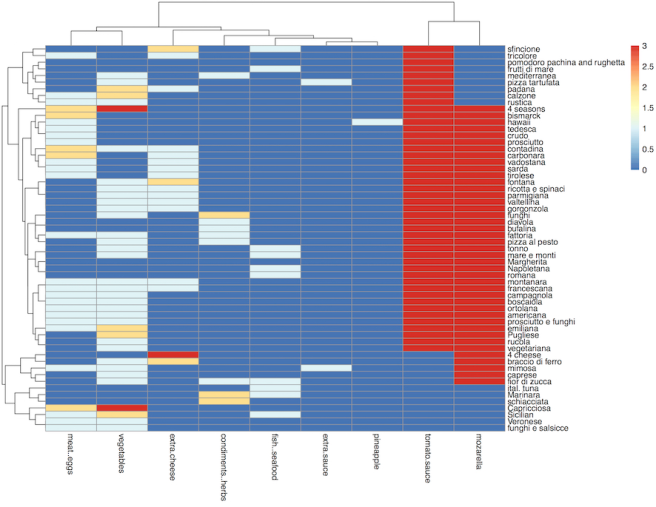
Figure 1. Clustering of the 58 types of pizzas analyzed based on their ingredient composition.
DISCUSSION
Here we present the first rigorous investigation of the origins and evolution of pizza, a form of life that has been shamefully neglected by science even as it has been shamelessly devoured by scientists. While the reasons are unclear, one cannot rule out some sort of large-scale conspiracy on the part of commercial entities. It would not be in their interest to recognize pizza as a life form; such recognition would likely trigger a cascade of intrusive regulatory measures that would curtail society’s wholly utilitarian approach to pizza’s handling and use. Ethical issues, too, have had an influence: in many societies, pizza is treated as an inanimate object, like a rock (only softer), and no consideration whatsoever is given to the possibility that it might possess some sort of limited awareness, possibly even experiencing feelings of distress or pain.
In modern times, pizza species have become entirely dependent on human cultivation, just like many plants, domesticated animals, and model organisms that are studied in laboratories. The biology of pizzas has become simplified through this dependency. Modern forms have, almost certainly, lost genes that were originally crucial to their ancestors’ survival. As a result, pizzas are no longer competent for survival in the wild. Although it should not be considered a parasite, pizza’s dependency on humans has likely sent it along an evolutionary path resembling that of pathogens and viruses.
Under normal processes of natural selection, one would expect organisms that are tastiest to their predators to be eaten more, and this would subject certain types of pizza to to intense negative selection. This would also be the case for pizza, particularly since it has no intrinsic means of locomotion that would allow it to escape from its human predators.
But domestication has reversed this trend, positively selecting for the forms that are most likely to be eaten.
Nutritional and Health Implications for Non-Pizza Species
Pizza is a fixture of worldwide ecosystems and global food chains, nourishing species as diverse as college students, police, bowling teams, and other categories of humans—and also dogs, cats, hamsters, pigs, rats, cockroaches, crocodiles, fish, etc. The decaying remains of pizza crusts that have fallen down cracks in sofas provide a rich environment for microbial life, including bacteria such as legionella, Yersinia pestis and Mycobacterium leprae, which might otherwise be in danger of extinction. In this way, pizza plays a central role in global biodiversity; one might even regard it as the glue that holds everything together. But this notion is somewhat speculative.
Technical obstacles have made it difficult to maintain pizza in laboratory cultures, creating a sort of black hole of knowledge with regards to its biology. This is alarming in light of the numerous epidemiological studies tying pizza to serious health problems including obesity, addiction, attention deficit disorders, frostbite, burnt tongues, and deaths related to placing aluminum foil in microwave ovens.
Excessive consumption retards human cognitive development, pushing adolescence far into the college years, a situation which can only be reversed by adding vegetables to the diet. Predatory consumption of pizza has led to a major reduction of human motility; delivery services have completely eliminated the hunter-gatherer activity that used to be required to obtain it.
Summary of Pizza’s Biological Features
By applying well-established methods of phylogenetic analysis to the features of pizza (namely, the ingredients found in 58 extant species) we derived the first systematic evolutionary account of its descent from an ancestral form. The results point firmly to a last common ancestor, providing insights into fundamental aspects of its biochemistry, development, and the selective forces that have shaped its evolution into diverse types. Our observations of pizza in situ suggest that its basic biology draws on unique features which are hard to reconcile with those of traditional biological models. A key finding is that the ancestral pizza exhibited very little elaboration of specialized structures. It consisted of only three tissues: dough, tomato sauce, and mozzarella. Each of these tossues exhibits a high degree of molecular complexity, while having stable biophysical properties that are crucial to maintaining the integrity of the organism over time.

Figure 2. Artist’s reconstruction of the last common ancestor of all current species of pizza
-
The Pizza Lifecycle
The pizza lifecycle is marked by the three phases embryogenesis, maturation, and decline.
Entry into a phase is determined by environmental factors: embryogenesis takes place at room temperature; maturation begins when the temperature dramatically rises to about 220 degrees Celsius and usually lasts 10-12 minutes. Returning to normal room temperature introduces a brief period of homeostasis after which pizza enters the phase of decline.
Laboratory experiments have shown that pizzas which have completed embryogenesis can be preserved through cryopreservation, which induces a state of dormancy or hibernation. They can be maintained this way for a year or two without any apparent damage. The decline phase can be prolonged by a day or two through cooling, after which a brief exposure to heat is used to revive the pizza. This may cause it to repeat the last stages of maturation and then enters the decline phase, which is now accelerated.
At the beginning of the decline phase, most pizzas separate into segments in a process we have termed alternative slicing. The result is a series of cracks or furrows that extend from one side through a mid-point and end exactly opposite around the circumference. Multiple slices develop, leading to wedge-shaped units—most often an even number (between 4 and 12) of segments. It is unclear whether this process begins at the middle and radiates outwards, or starts at an edge, traverses the middle, and arrives at the other side. The mechanisms required for these two processes would necessarily be fundamentally different. Either way, a number of fascinating questions arise: As each split begins, what molecular signal does it follow to stay on course rather than veer away? What determines the total number of divisions that will occur? How does one side of the pizza “know” what is happening on the other side, so that the proportions of the slices remain equal? We are exploring these questions through the “Virtual Pizza,” which we developed for use in computer simulations.
The biological functions of these subdivisions are unclear. We hypothesize that they have been sustained through a unique sort of evolutionary mechanism that does not directly benefit the pizza itself, for example by promoting its survival, but rather by ensuring a harmonious environment around it. A failure of the pizza to divide would cause its predators to fight over the whole. Even if only a very small fraction of these conflicts were fatal, over long periods of time this would offer a slight advantage to animals that fed off the sliced form. Since pizza now exists only as a domesticated species, its genomic features can be seen, in a way, as an extension of the gene pools around it. For whatever reasons, this leads to better chances of survival for pizza variants that promoted harmony among the other species around it. The effect appears to be bi-directional: research has shown that just the presence of a slice of pizza triggers a release of dopamine among humans. This makes them less aggressive and more sociable. So ultimately, the integration of pizza into the human diet appears to have played some role in the development of modes of primitive social organization that became more and more elaborate until they acquired the forms familiar to us today: priesthoods, the military, and governments. And bowling alleys, and pizza parlors.
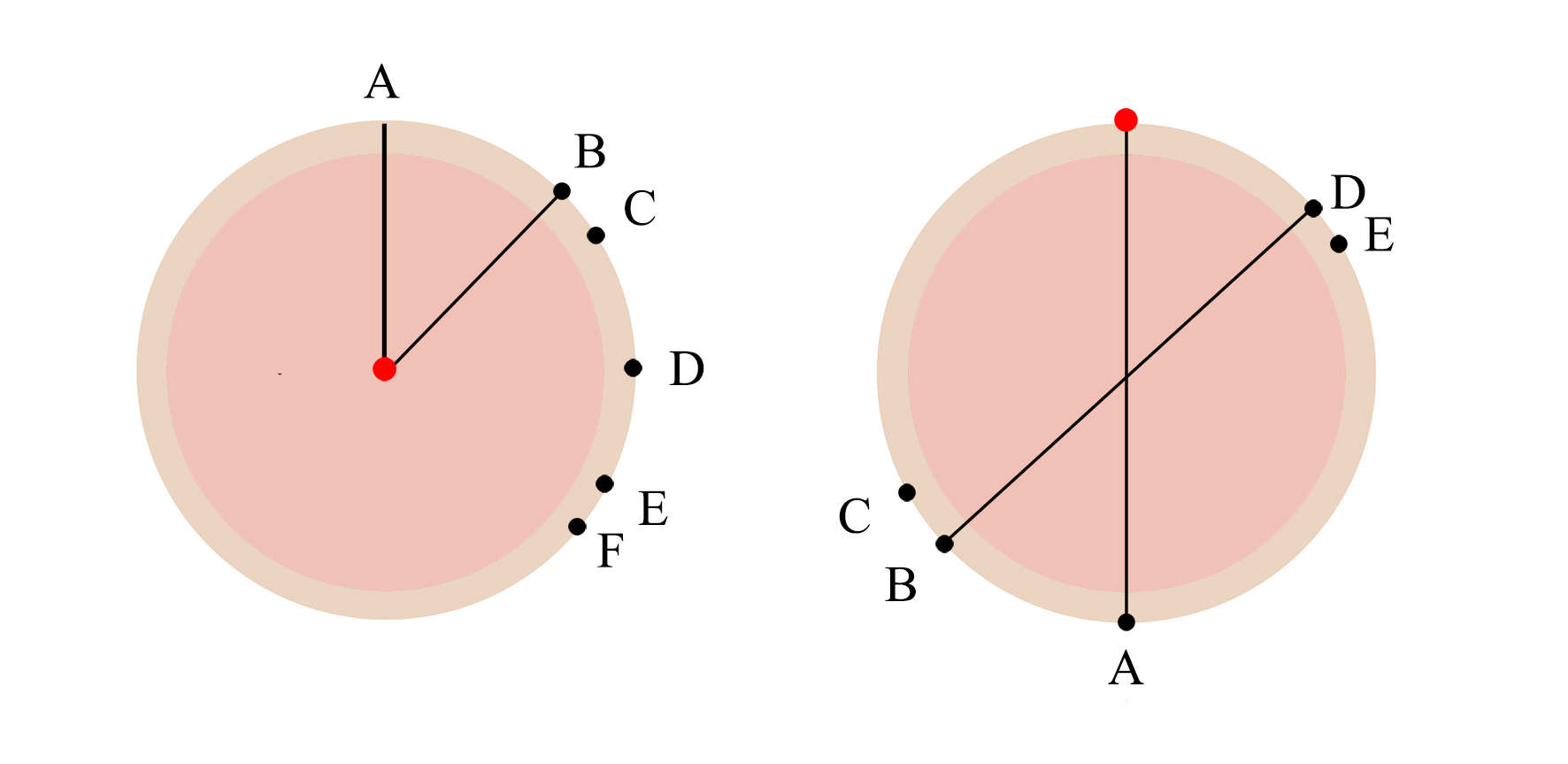
Figure 3. The Virtual Pizza: Computer modeling of alternative slicing
-
Tissue Structure Through the Lifecycle
Dough begins as an elastic substance under room temperature, which is characteristic of the environment of embryogenesis; in the heating phase it becomes crisp, and remains that way as it cools, matures, and approaches death.
The sauce begins as a thick fluid which crystallizes somewhat at the pinnacle of the heating phase, remaining gummy through the first phases of cooling, then hardens until it is nearly all crystallized at the end of cooling.
Mozzarella begins as a rubbery substance, melts into a liquid under heat, and only hardens after an extended period of cooling over time.
These transformations of the three tissues do not alter the basic structural integrity of the whole, unless the pizza is subjected to unusual biomechanical forces such as it would encounter when flung through the air. An embryonic pizza would stretch and fly apart; the hardness of a mature pizza gives it the properties of a Frisbee.
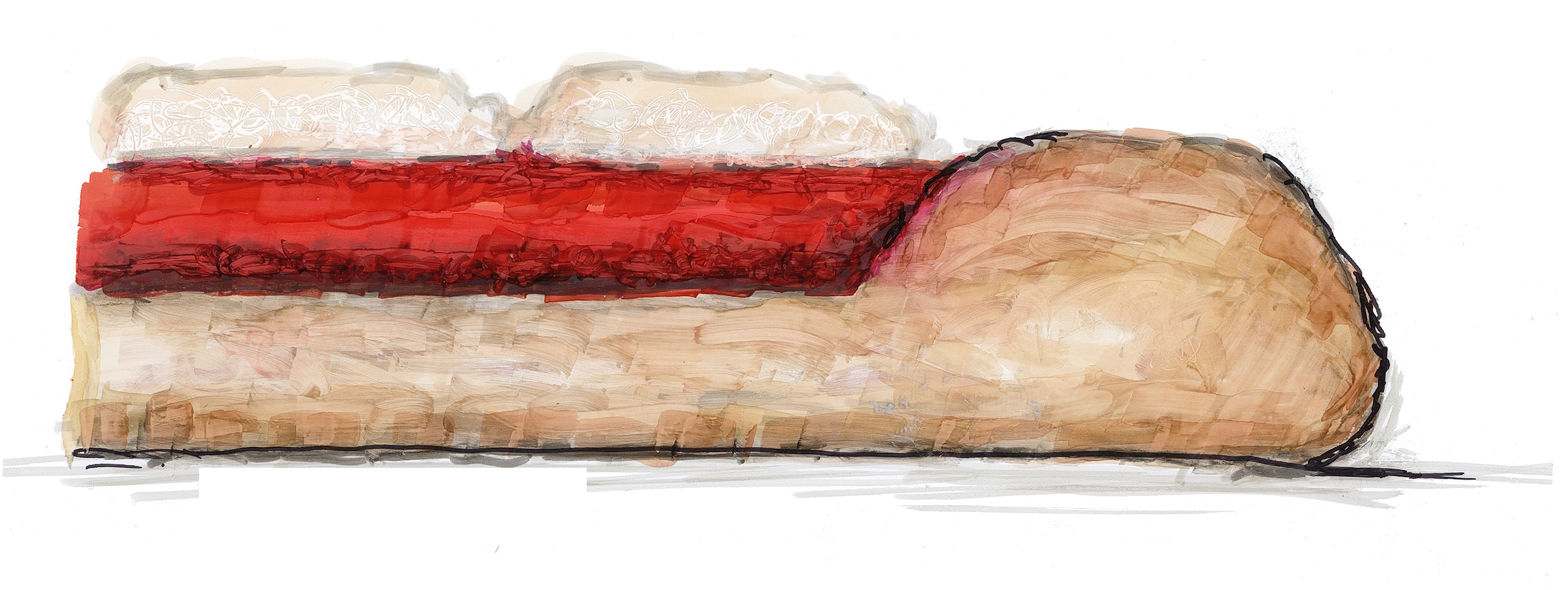
Figure 4. Layers of pizza tissue structure (side view)
-
Embryogenesis
The earliest stage of pizza’s embryonic development bears some similarities to Dictyostelium (“slime mold”), an organism that lies at the borderline between unicellular and multicellular life.
Dough assembles in an environment containing sufficient concentrations of the necessary chemical and biological ingredients: particles of wheat, water, sugar, and some form of oil. Such environments usually contain abundant populations of yeast cells, which get dragged along as the components are attracted to a central location, probably by sensing chemokine-like molecules that have been secreted by a cook’s hands.
Upon arrival, the components merge in a sort of symbiotic collective that draws on the genes of the wheat and yeast to trigger a series of metabolic reactions that derive energy from the sugar and oil. The result is to fuse everything into a pliant, undifferentiated mass of dough. Originally this is a ball-shaped mass with stem-cell like properties that may yield a single pizza, or be pinched off to form genetically identical twins.
The ball spreads across a surface to form a flat, circular basal membrane on which new layers will arise. The dough induces the formation of tomato sauce, rapidly followed by a layer of mozzarella. In more elaborated forms, additional organelles such as salami or anchovies arise through chemical interactions between the sauce and mozzarella. Yet the three-layered structure is retained.
This is highly reminiscent of the tissues that arise in animal gastrulation, but that process begins with a group of cells that have retained the ball-like shape, causing inner layers to interact in more complex ways. This difference is a determining factor in pizza evolution, because it leaves the lower layer attached to a substrate, while the upper remains naked and exposed to the environment. The lack of a membrane or shell means that the upper layers of a pizza must constantly contend with fluctuations in the surrounding environment.
This single difference, combined with the fact that embryonic pizza does not have a womb to protect it from dramatic changes in temperature, probably severely restricted the degree to which ancient pizzas could vary from the original design. While eventually pizzas developed specialized organelles such as salami and funghi, there was never much variation to serve as the basis for selection. So the type of evolutionary tinkering that occurred in animals, and shaped the formation of highly sophisticated organs such as the brain, never occurred in pizza.
Conclusions
Our investigation provides the first account of the evolutionary route by which modern species of pizza diverged from an ancient, ancestral form. We characterize the last common ancestor as sharing the three-layer structure of modern pizzas, which resembles the first stage of animal gastrulation. In contrast to animals, however, pizza got stuck there, and never added additional developmental stages.
It is interesting to speculate what might have happened if instead of flattening, dough had retained its original, ball-shaped form, and built layers of sauce and cheese inside. Pizza calzone, a modern species, obtains this type of structure by folding the membranous dough around to seal off the interior, but this is the very last stage in its embryonic development. If, in the distant past, this progression had advanced to the beginning of embryogenesis, pizzas might have followed an evolutionary path much more like our own. Potentially this could have made pizza, rather than humans, the preeminent form of intelligent life in the known universe.
Thinkers such as Richard Dawkins see the evolutionary value of intelligence in its promotion of the survival and reproduction of a species’ genes. Pizza found an alternative by entering into a dependency on humans, who gladly overtook measures to ensure its reproduction, which would have required the development of new social structures. Over time the dependency increased and ultimately restricted the evolution of pizza along paths toward the species we know today. But this notion is somewhat speculative.
Preliminary data suggest that it may be possible to push the knowable ancestry of pizza back even farther, to a point at which the last common ancestor diverged from other organisms such as crêpes, pancakes and burritos. We are currently digesting the data from that investigation, which has presented some technical challenges (mainly due to the fact that we have gained so much weight we no longer fit into our cars). Once these issues have been resolved, we anticipate publishing the results at a later date,
References
“Development of a Nutritionally Balanced Pizza As a Functional Meal Designed to Meet Published Dietary Guidelines,” Emilie Combet, Amandine Jarlot, Kofi E. Aidoo, and Michael E.J. Lean, Public Health Nutrition, vol. 17, no. 11, 2014, pp. 2577-2586.
“pheatmap: Pretty Heatmaps,” R. Kolde, R package version 1.0.8, 2015. <https://CRAN.R-project.org/package=pheatmap>
References
- Combet E., Jarlot A., Aidoo KE., Lean ME. Development of a nutritionally balanced pizza as a functional meal designed to meet published dietary guidelines. Public Health Nutr. 2014 Nov;17(11):2577-86. doi: 10.1017/S1368980013002814.
- Kolde R. (2015). pheatmap: Pretty Heatmaps. R package version 1.0.8. https://CRAN.R-project.org/package=pheatmap.
Supplementary files will be provided by the corresponding author upon request





